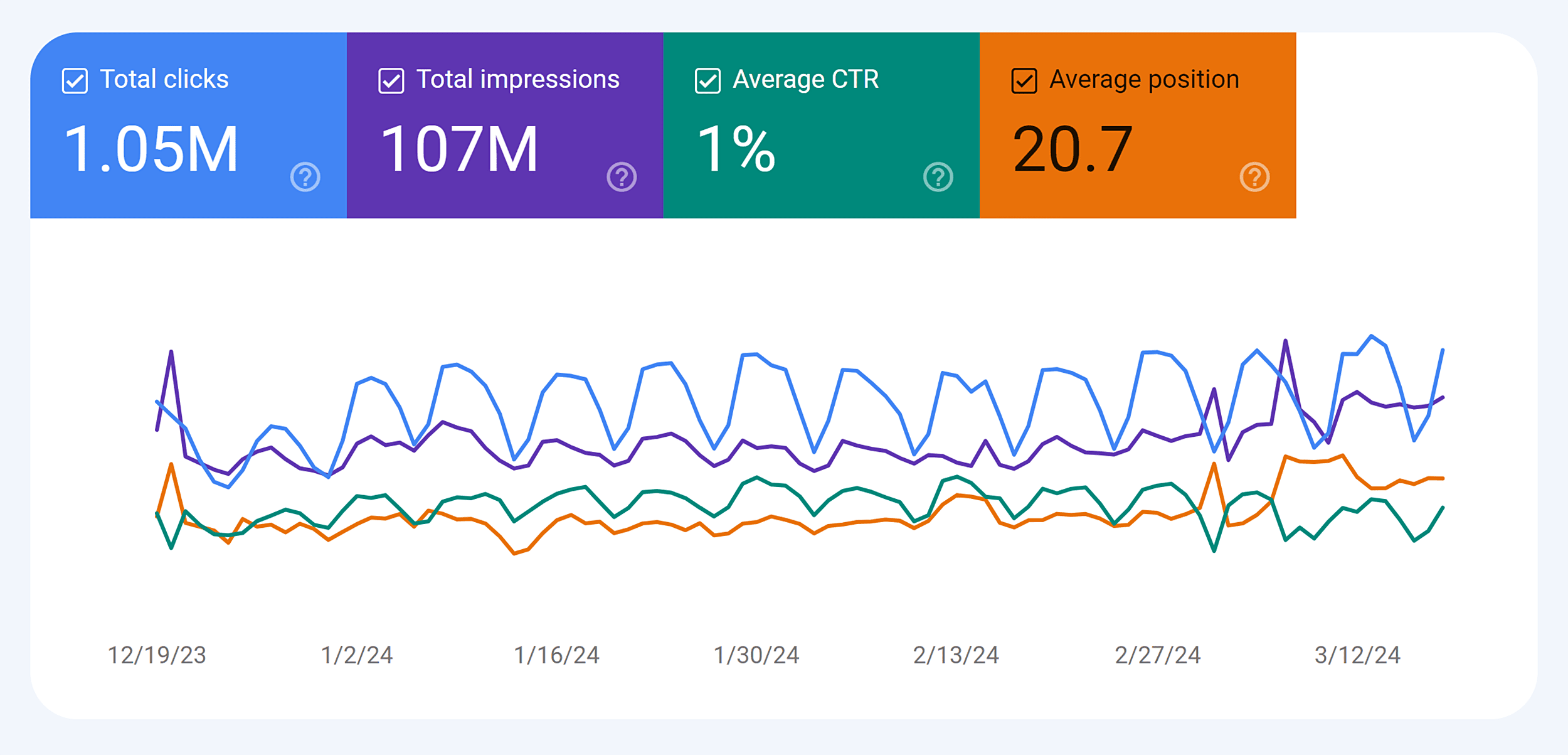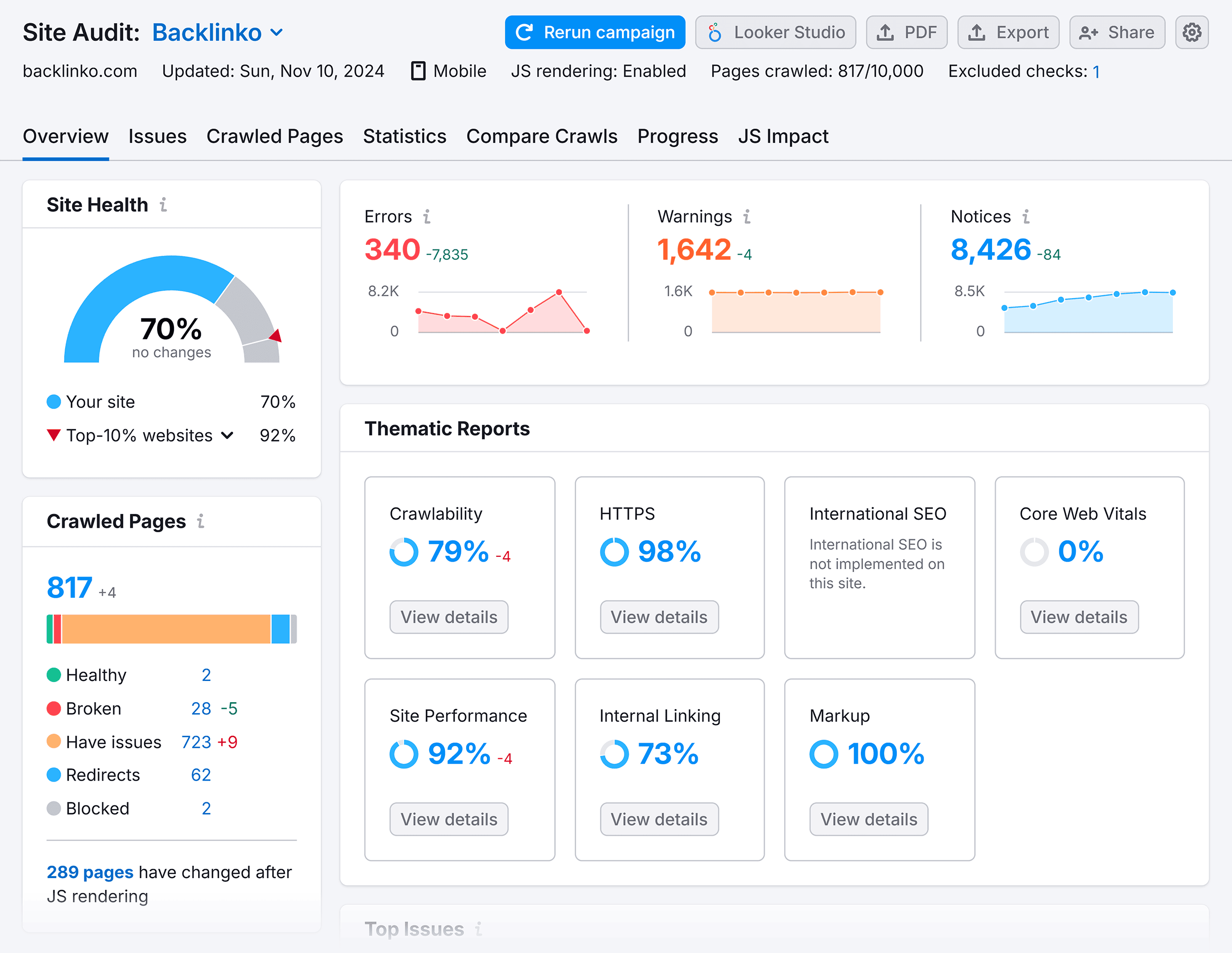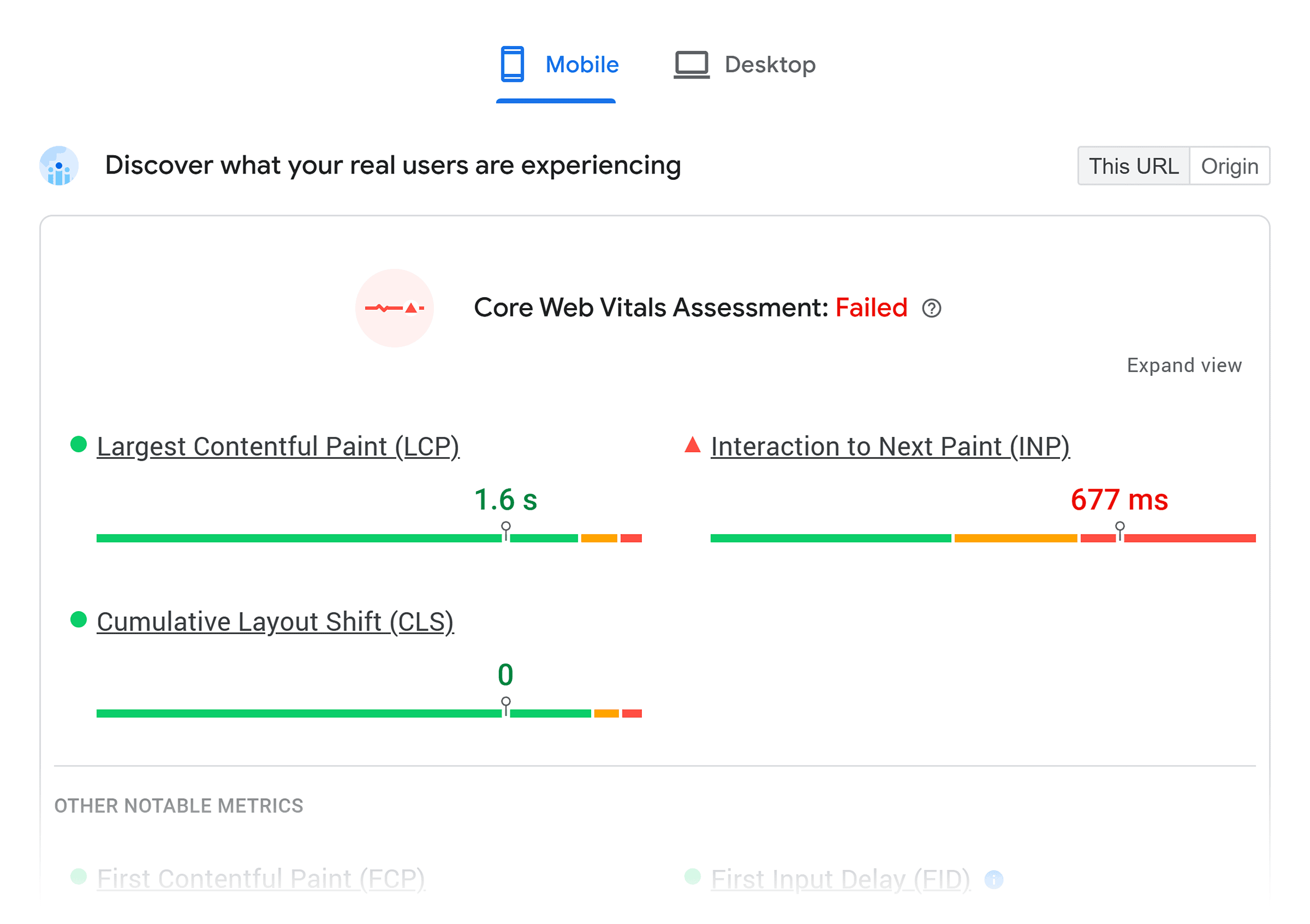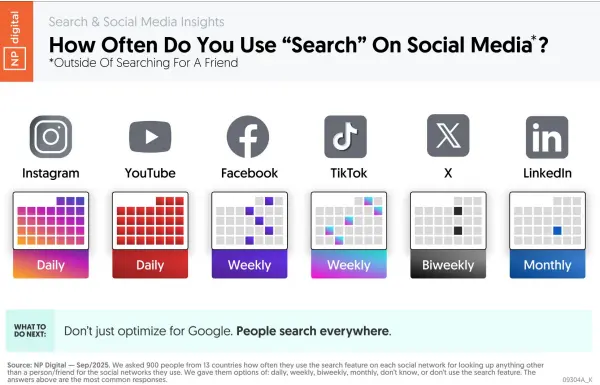How To Improve Your Travel SEO In 10 Steps
Travel SEO is about turning strangers into guests. But it’s no small task competing with major sites like Booking.com, TripAdvisor, and Expedia. With so many players in the market, standing out in search engine results can feel impossible. Yet,...

Travel SEO is about turning strangers into guests.
But it’s no small task competing with major sites like Booking.com, TripAdvisor, and Expedia.
With so many players in the market, standing out in search engine results can feel impossible.
Yet, small players can still succeed.
Live Oak Lake, a boutique resort in Texas built a strong direct booking website that ranks No. 1 for search terms like “waco cabins.”

They made $1.1 million in their first year and sold the business for $7 million in 2024.
In this guide, you’ll learn exactly how to implement an effective travel SEO strategy, including:
How to optimize for travel-specific search intent 10 proven strategies to outrank major OTAs Technical fixes that boost rankings fastNo generic tips. Just proven strategies you can use to increase organic traffic and bookings.
The Travel SEO Playing Field
In the travel industry, the SEO landscape is crowded.
Online travel agents (OTAs), airline websites, and meta-travel platforms dominate search results.
You also have travel blogs, tourism boards, accommodation sites, and tourist attraction websites.
All are fighting for visibility among millions of travel-related searches.
Just look at the 89.3 million monthly searches for keywords containing the word “flights” in the U.S. alone:

But that’s not the only challenge—the playing field itself is constantly evolving.
SERP features for travel-related searches are more diverse than ever. This includes Google’s recent addition: AI Overviews.
These new features reduce clicks on traditional blue links.
As a result, click-through rates (CTRs) drop each year.
Here are key SERP features to keep in mind:
AI Overviews: Concise summaries from Google’s AI for research-based queries

Featured Snippets: Quick answers for informational or question-based searches

Google Flights & Hotels: Direct flight and hotel listings within the search page

Top Sights, Top Experiences, & Popular Destinations: Popular attractions based on reviews and Google Maps data

People Also Ask & People Also Search For: Related questions to your query

Forums: Discussions from trusted sources like Reddit, TripAdvisor, and Quora

Some features, like People Also Ask, offer ways to capture organic traffic.
Others, like Google Flights and Google Hotels, keep users within Google’s ecosystem. These limit opportunities for third-party sites.
As these features evolve, staying ahead of the curve is key.
Navigating this shifting landscape requires expertise. Much like guiding travelers through new destinations.
Here’s how to take control of your travel SEO strategy.
Step 1: Define Your Travel SEO Strategy
Creating a solid strategy is essential when tackling SEO for the travel industry.
It helps identify challenges, set clear guidelines, and outline actionable steps.
Diagnose the Challenge
Every website faces unique SEO challenges.
Start by analyzing the current performance of your travel website.
How?
By checking your key metrics.
These include organic search traffic, revenue, and user engagement.
Also, examine mobile usability, loading speed, keyword rankings, and your backlinks.

Next, analyze the competition in the SERPs.
Identify competing websites by evaluating which sites rank for the keywords you’re targeting.

You can also use Semrush’s Keyword Gap tool.
It finds keywords your competition ranks for, but you don’t.
Here’s how to do it:
Add your website and the URLs of up to four competitors to the tool. Click “Compare.”

Click the “Missing” tab.
It shows terms that Expedia, Trivago, and Tripadvisor rank for, but your site doesn’t.

Once you know your competitors’ performance, it’s time to take the next step—keyword research.
Step 2: Conduct Keyword Research
Google advises creating content for users, not solely to rank for keywords.
But if your content isn’t based on keyword research, it won’t rank well or drive SEO traffic and bookings.
Start Broad
Your keyword research will be the base of your SEO content strategy for the coming year(s). So, aim to make it as comprehensive as possible.
Search trends in travel do evolve. But core keywords stay consistent.
If you’re selling a destination like The Bahamas, use all related keywords with its name.
One of the most effective approaches is to use paid tools like Semrush’s Keyword Magic Tool.
It provides data and insights that will help you target the right keywords for your audience.

More data isn’t always better.
So, focus on the key metrics: search volume, keyword difficulty, and search intent.
Search Volume: The average monthly searches for a keyword Keyword Difficulty (KD%): A measure of how hard it is to rank for a keyword. It’s based on the link profiles of the top 10 ranking pages. Search Intent: The purpose behind a user’s search query. It’s categorized as transactional, informational, commercial, or navigational.Stick to these essentials to guide your keyword strategy effectively.
Define Commercial Opportunities
The commercial value of a keyword varies for each business.
What may be a high-value commercial keyword for a competitor might not be for you.
For example, let’s say you have top-rated resorts in Mexico. You might see “all-inclusive resorts in Mexico” as a valuable keyword.
Now, imagine you manage one outdated, overpriced resort there. Your chance to profit from this keyword is likely much weaker.
When evaluating a commercial opportunity, ask: Will this page convert visitors?
Categorize each keyword into the following:
0. Not Likely: We don’t offer anything related to the user’s intent 1. Unlikely: We offer something related to the user’s intent, but it doesn’t directly address the user’s needs 2. Potential: We offer a solution that could meet the user’s intent 3. Likely: We provide the best solution for the user’s intentThis approach helps focus your efforts on the most commercially valuable keywords.
By knowing what users want, you can avoid irrelevant keywords. This will ensure your content matches user intent.
It also increases your chances of ranking and converting.
Step 3: Create a Keyword Map
Once you’ve gathered your keywords, the next step is to build an SEO keyword map.
Here’s how:
List existing pages: Use an SEO spider tool like Screaming Frog. It will list all existing pages. Filter irrelevant pages: Remove any pages that won’t serve as SEO landing pages. Focus only on those that have the potential to drive organic traffic.
Pair pages with keywords: Use Google Search Console (GSC) to find queries that generate the most clicks for each page.
Assign target keywords: Assign one keyword from your research to each relevant page.
Avoid keyword cannibalization: Target each keyword with only one page. This prevents competition between your own pages for the same search query.
Filter irrelevant pages: Remove any pages that won’t serve as SEO landing pages. Focus only on those that have the potential to drive organic traffic.
Pair pages with keywords: Use Google Search Console (GSC) to find queries that generate the most clicks for each page.
Assign target keywords: Assign one keyword from your research to each relevant page.
Avoid keyword cannibalization: Target each keyword with only one page. This prevents competition between your own pages for the same search query.
SEO for travel websites often involves optimizing destination-specific and service-related keywords.
These efforts help drive organic traffic to your site.
By mapping keywords to pages, you’ll have a clear strategy. It’ll help you optimize existing content and find gaps for new content.
Step 4: Form a Content Strategy
With your keyword research and keyword map in place, it’s time to create an SEO content strategy.
To maximize organic revenue, prioritize content targeting bottom-of-the-funnel keywords.

These are high-intent keywords where users are closest to making a booking decision.
By focusing on this stage first, you’ll drive more immediate conversions and revenue.
Target Commercial Keywords
In your keyword sheet, filter for keywords with commercial scores of two or three.
This filter will give you keywords with high commercial intent. They’ll match what you offer.
Think “Cancun resorts,” “flights to Hawaii,” “Las Vegas hotels,” or “Punta Cana excursions.”
For each keyword:
If a landing page is ranking, optimize its content to boost performance If none of your pages are ranking, decide whether to create a new landing page or optimize an existing oneFinally, create a timeline and roadmap for implementing these optimizations.
This helps ensure steady progress toward your content goals.
Build Topical Authority
After covering your commercial keywords, it’s time to move up to the middle of the funnel.
Focus on keywords like “things to do in Miami,” “best time to visit Japan,” and “best beaches in Puerto Rico.”
These keywords are primarily informational and have lower conversion rates.
But they’re crucial for SEO for travel websites.
Why?
Because they help build topical authority.
Cluster these topics to help search engines understand your content.

You’ll signal to search engines that your site is a trusted travel resource.
Blog pages often cover these topics best. But you can use landing pages if they fit your strategy.
Create a Topic Map
Up to this point, your SEO content strategy has been based on keyword data.
Now, it’s time to explore new topic ideas by leveraging topic maps.
To do this, use an AI tool like Claude or Chat GPT to uncover relevant topics for specific destinations.
Here’s an example of a prompt you can use:
“Please provide a table listing the key topics related to travel in Mexico. The table should have three columns: categories, subcategories, and subtopics. Each subtopic should have its own row.”

Then, copy your topic map to a sheet. Use a ChatGPT plugin like Whimsical Diagrams to visualize it.
Use the following prompt: “Generate a mind map from this table: {paste table}.”

Repeat this process for each destination you serve.
Add any new topics to your content roadmap.
Cover a wide range of content that appeals to search engines and your audience.
This approach fills gaps in your strategy. It keeps your content fresh and competitive.
Tap Into the Travel Content Loop
The travel experience is cyclical.
Here’s how the journey typically unfolds:
Inspiration: “That’s beautiful, where is that place?” Education: “Tell me more about this place” Booking: “Let’s go there” Inspiration again: After the trip, the traveler dreams of new adventures. This sparks the loop once more.Travelers constantly seek beauty, adventure, and new connections.
Your content strategy should reflect this ongoing loop.

To build a successful travel content strategy off the back of this loop, think beyond SEO. This is especially true for inspiration, where social media is vital.
SEO is about fulfilling a need for information.
So, focus on education and answering users’ specific questions.
Inspiration, however, often comes to people when they’re not actively searching for it.
That’s why inspirational content must be:
Visual and destination-focused Pushed to users, igniting wanderlustOnce the audience is captivated by a destination, they might seek more information. That’s where SEO comes in to guide them further down the funnel.
When planning content, ensure synergy between inspirational and informational content.
For example, let’s say you publish an SEO-optimized article like “The Best Time to Visit Costa Rica.”
Coordinate with your social media team to release visual, inspirational content.
This integrated approach keeps your audience engaged at every stage of their journey. Whether they’re exploring on social media or searching for information online.
Step 5: Establish a Content Creation Process
Your content strategy is ready.
Now it’s time to establish a streamlined content creation process.
Here’s how that might look:
 Keyword selection: Choose primary and secondary keywords based on your content calendar
Writer briefing: Provide clear, detailed briefs for high-quality content
Write: Focus on comprehensive, unique content that goes beyond top-ranking pages
Edit: Align with the brand’s tone and ensure scannability
Optimize: Fine-tune for SEO—headings, body content, internal links, and meta
Add photography: Use images that follow guidelines and enhance user experience
Publish and promote: Share across social, email, and other channels to maximize reach
Translate: Expand reach by targeting non-English keywords
Keyword selection: Choose primary and secondary keywords based on your content calendar
Writer briefing: Provide clear, detailed briefs for high-quality content
Write: Focus on comprehensive, unique content that goes beyond top-ranking pages
Edit: Align with the brand’s tone and ensure scannability
Optimize: Fine-tune for SEO—headings, body content, internal links, and meta
Add photography: Use images that follow guidelines and enhance user experience
Publish and promote: Share across social, email, and other channels to maximize reach
Translate: Expand reach by targeting non-English keywords
To AI or Not AI?
When it comes to your content creation process, a key question is how much of it should involve AI.
The answer depends on your goals.
One thing is certain—it’s tough to stand out in a sea of mass-produced AI content by just publishing more AI content.
Craftsmanship and authenticity are what make content truly stand out.
For example, let’s say you’re writing about “the best restaurants in Amsterdam.”
Instead of simply copying the list from TripAdvisor, go beyond the surface:
Experience the destination firsthand Talk to locals and uncover hidden gems that aren’t widely covered Engage with restaurant owners. Try their signature dishes. Share deeper insights than current online articles.AI should play the role of an assistant, not the solution.
That said, AI can still assist in the content creation process.
It can help create content briefs, structure the content, and suggest data points.
This lets writers focus on the human elements. They can craft unique, authentic content that AI cannot replicate.
In this hybrid approach, AI handles repetitive tasks.
Meanwhile, your team focuses on insights, experiences, and personal connections.
Step 6: Set Up Tracking and Measuring
Begin by measuring your current performance to understand where you stand.
Define and track both macro and micro conversions. Use your travel site’s analytics tools (e.g., Google Analytics 4).

For most travel websites, the macro conversion will be bookings and revenue.
Micro conversions may include actions like account creation or requests for more information.
They can also involve newsletter sign-ups, brochure requests, and travel guide downloads.
Once tracking is set up, integrate SEO tools like Google Search Console (GSC).
Use a rank tracker to gain deeper insights into what’s happening on the SERPs.
For example, Semrush’s Position Tracking tool tracks keyword rankings over time.
Finally, create easy-to-understand dashboards that blend different data sources. They let you track progress and show results to stakeholders at performance meetings.
Step 7: Optimize Your Google Business Profile
Local SEO is essential for improving visibility.
It’s particularly important for attractions, restaurants, bars, and accommodations at popular destinations.
Optimizing your Google Business Profile (GBP) can lead to quick wins.
Here’s how to do it:
Set Up Listings for Each Location
Let’s say your travel company operates in multiple locations.
You should create and optimize a Google Business Profile for each location.

Select the Appropriate Category
Choosing the right primary category (e.g., “Hotel,” “Tourist Attraction,” “Restaurant”) is vital.

Why?
Because it impacts how your listing appears in search results and Google Maps.
Complete All Profile Information
Ensure your profile is fully completed, including:
Business name Address Phone number Website URL Hours of operation Business attributes (e.g., “Free Wi-Fi,” “Pool”)Write a Compelling Business Description
Custom descriptions aren’t allowed for accommodation and attraction listings.
However, you can still write compelling descriptions for restaurants and bars.

Use relevant keywords to improve search visibility. Ensure it accurately reflects the experience you offer while adhering to Google’s guidelines.
Upload High-Quality Photos and Videos
High-quality photos and videos of your business can boost engagement.
They help customers see what you offer and connect with your brand.

These visuals provide potential customers with a more immersive experience. It helps them get a better sense of what you offer.
Be sure to consistently update your media to keep the listing fresh and relevant.
Utilize the Q&A Section
Proactively manage the “Questions & Answers” section by addressing common guest inquiries.

Post frequently asked questions yourself.
Cover topics like services, booking policies, or amenities.
Make sure to answer them thoroughly.
Create Regular Updates
Use GBP updates to share offers, events, or new services.
These can improve engagement and keep your audience informed.

Encourage and Respond to Reviews
Actively encourage guests to leave reviews, especially after a positive interaction.

Respond promptly to both positive and negative reviews.
This shows engagement and demonstrates excellent customer service.
Reviews and responses also boost credibility and influence search rankings.
By following these steps, you can significantly improve your business’s local visibility.
This boosts engagement with potential customers looking for travel services in your area.
Step 8: Ensure Your Content Gets Indexed
A technical SEO audit is one of the cornerstones of your travel SEO strategy.
The reason is simple.
If the copy of a web page isn’t indexed, that page is unlikely to rank in Google’s search results.
In other words, it won’t drive organic traffic and bookings.
So, when auditing a travel website for the first time, use a web crawler like Screaming Frog. It’ll check whether your pages are indexable.
For a more detailed approach, use Semrush’s Site Audit tool. It can help identify technical issues with your site.

For individual page checks, use Google Search Console. It shows when Googlebot last visited the page and if it’s indexed.
To (re)index the page in GSC, simply click the “request indexing” button.

Alternatively, use the “site” operator in Google. Enter this query in the search bar:
site:www.website.com/landing-pageIf the page appears in search results, it’s indexed. If not, it isn’t.
Check for Partial Indexing
Even if a page is indexed, not all content may be.
Content that needs JavaScript to load, like a slider or hidden text, is at risk of not being indexed.
To check, use the Web Developer Chrome extension. It will disable JavaScript and reload the page.
Compare it to the original version to identify content not loading—this content is at risk.
You can also use the View Rendered Source Chrome extension. It shows the difference between the raw code and the rendered page.

Headings and paragraphs not in the raw code, but in the rendered code, might not be indexed.
If you suspect specific copy isn’t indexed, use the “site” operator in Google with a query like:
site:www.website.com/landing-page/ "insert copy at risk here"If the copy shows up where you’d normally find the meta description, you should be good!
If Google returns no results, that content and its links may not be indexed.
Prevent Duplicate Content
Duplicate content can negatively impact your rankings.
How?
Google can struggle to determine which of your pages to prioritize.

It can also lead to crawling, indexing issues, and loss of link equity.
In severe cases, it can also trigger manual penalties.
The seven most common types of duplicate content on travel websites are:
Destination descriptions: Frequently reused descriptions of popular travel destinations across multiple accommodation pages URLs with filtering parameters: Filtering options (e.g., “?sort=price”) generate different URLs. These may show similar content. Pagination: Ensure paginated lists of destinations or accommodations are distinct or canonicalized URLs with UTM parameters: Parameters like “?utm_source=social-media” track traffic. But they can also create duplicate content issues. Split URL tests: A/B testing may create duplicate content. It does this by generating alternative versions of the same page. Dynamic URLs with session IDs: When indexed, they can cause duplicate content issues M-dot URLs: They’re rare today. But if used, link them to their desktop versions.Use Semrush’s Site Audit tool to identify duplicate content. Mitigate it by implementing canonical tags.

Use Structured Data
Structured data helps search engines better understand and display your content.
For travel websites, this can lead to rich results like pricing and star ratings.
These features can help boost click-through rates.

Structured data can also improve your site’s rankings.
How?
By providing search engines with clearer context for your content.
Step 9: Optimize UX with a Mobile-First Approach
Users have been living in a mobile-first world for some time, and Google was quick to follow.
Travelers may book on desktop. But they often make the decision to book on mobile.
Focus on quick load times and ensure strong Core Web Vitals performance.
Search engines like Google favor fast-loading content.

Here’s how to get started:
Leverage User Data
Analyze your website using Google PageSpeed Insights.
Look at the “Core Web Vitals Assessment.”
It’s essential for understanding how your website performs in real user environments. This data can help you optimize speed and user experience.

You can see the performance metrics for a site’s Largest Contentful Paint (LCP), Interaction to Next Paint (INP), and Cumulative Layout Shift (CLS).
These are key indicators of how well your site loads and provides a smooth user experience.
For example, the LCP score here shows 3.8s, which is above the recommended threshold. Meaning there’s room for improvement.
Improving these metrics will boost your site’s performance.
It’ll also make your site more search-engine friendly and enhance the user experience.
Make Loading Times a Priority
You can’t do it alone.
You’ll have to get IT resources to improve the loading time of your landing pages, which are likely to be scarce.
If fast loading times aren’t a priority for the business, they won’t be for IT either.
Simply submitting a ticket won’t solve the issue.
Instead, foster a culture where speed is continually measured and improved.
Optimize Landing Pages for Mobile
Ensure the most important content is visible on the first screen users see.
For travel, this often means starting with an engaging visual to capture attention.
It helps users imagine being at their dream destination.
Additionally, highlight your unique value proposition, and provide a clear call-to-action.
Reinforce your credibility with reviews, awards, or endorsements.

Step 10: Strengthen Your Backlink Profile
Content demonstrates relevance, while links signal authority.
Both are essential to rank well in Google search results.
Leverage Existing Relationships
Improving SEO for travel agencies means building relationships.
It also means getting links from trusted business partners.
Leverage existing relationships with tourism boards, suppliers, and partners to earn backlinks.
Like this:

Use Digital PR for Industry-Wide Authority
In the travel industry, digital PR campaigns are one of the best ways to establish authority.
They aim to boost your brand’s visibility and credibility.
How?
By earning high-quality backlinks from reputable websites.
Digital PR campaigns are typically built around link-worthy assets, such as:
Data-driven travel insights and reports Unique tools or calculators Interactive maps Comprehensive travel guides SweepstakesWork with your PR team. Create campaigns that resonate with your target audience and the media.
For example, Sandals Resorts ran a campaign to find a professional cocktail critic.

One person was “hired” to collaborate with Sandals’ expert mixologists. Together, they tested and refined a range of cocktails.
This unique and engaging story captured the attention of numerous high-authority travel publishers.
As a result, it drove significant backlinks to their site.
Target Commercial Pages with Guest Posts
To build links to your commercial pages, try guest posting on travel sites.

This method lets you target specific keywords. It also generates referral traffic from relevant audiences.
Use internal linking, partnerships, digital PR, and guest posting.
This will help build the authority needed to compete in Google’s search rankings.
Turn Strangers Into Guests with Travel SEO
Mastering travel SEO is about more than ranking for keywords.
It’s about connecting with travelers at every stage of their journey. From inspiration to booking and beyond.
The travel industry is always changing.
But one thing is constant: Travelers want connections, experiences, and reliable information.
Many companies use travel SEO services to rank higher. But the tips in this guide will help you get similar results on your own.
Use creativity and data-driven strategies. Be authentic. Transform your travel website into the top resource.
It can help turn strangers into loyal guests.
Ready to take your travel SEO strategy to the next level?
The tool will help you organize and execute your plan for optimal results.

 Fransebas
Fransebas 






























